It’s fascinating to listen to this discussion of How Much Clothing Do I Really Need? for me because I don’t acquire a lot of clothes and haven’t for decades. Now the really funny thing, from my perspective, is that I didn’t realize I was that much different from folks who purchased most of their clothes, until one day I got to thinking. Gee, anytime I want something or need something in my wardrobe, I would simply make a trip to the stash closet (OK, now it’s a room), and pick out something, and boom, I had it. What could be simpler, more efficient, and certainly satisfied all the needs I ever had or could want. This has been my life since the 1970s. This is a no-brainer for me.
Then came the famous Marc Jabobs show for Perry Ellis of 1992. Ever since then, I could see a lot of what was being offered to the consumer. (Confession: I have always been addicted to high fashion, and will continue to be, even when it’s not really what I want, hence the fascination and admiration of the John Galliano Spring/Summer 2012 collection). This is the major reason I came to sewing – to make my own look with inspiration and ideas from other designers, history, and/or street looks. And BTW, this is where a lot of other major designers get their inspiration – from the same sources.
So listening to the podcast brought up some interesting ways of looking at fashion. I’ve had the advantage of seeing fashion transform for almost 6 decades. Ugh! It sure doesn’t feel that long! But it is.
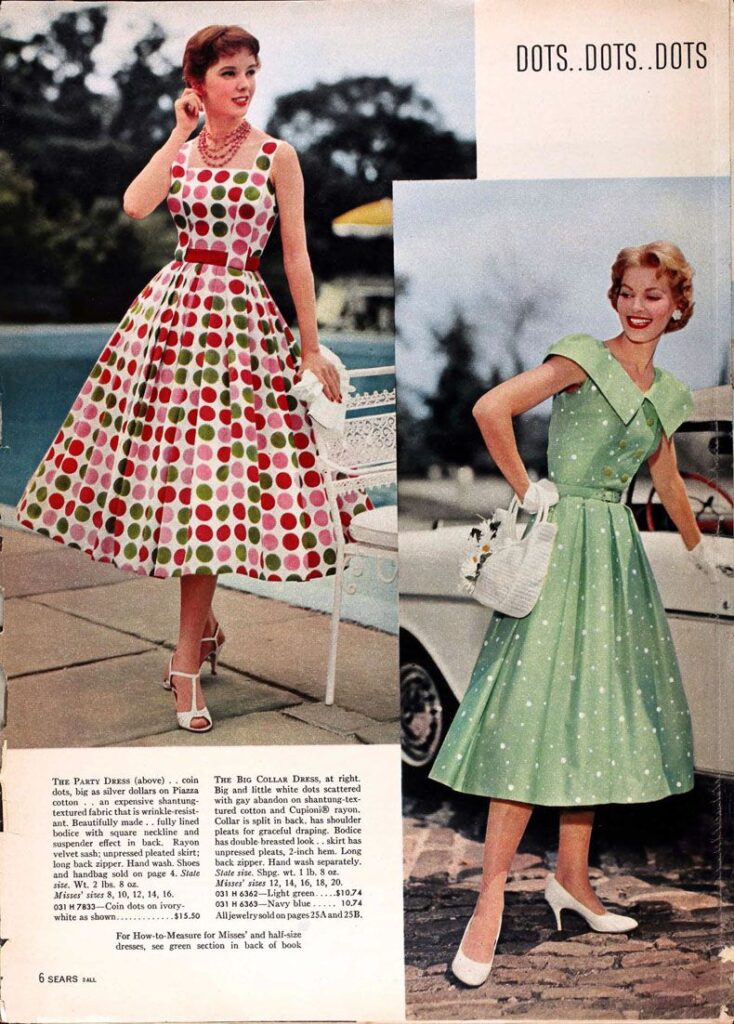
I remember vividly these dresses on the most stylish of women in my home town. The skirts were full like this and had many petticoats. Clothes and accessories were coordinated to within an nth degree. You always wore white gloves in the summertime and dark gloves in the winter. If you went to the downtown area of a larger city, you always had a hat and gloves on, and your shoes coordinated with those hat and gloves.

This was my first fashion craze and I remember thinking that these clothes were so mod and fashionable that why wouldn’t anyone want them. There was a particularly stylish lady in our town and remember her posting her mail at the downtown post office, decked out in her latest Pucci dress at the downtown post office. At the time, she was the epitome of style and fashion. To this day, that picture in my mind is associated with style and grace.
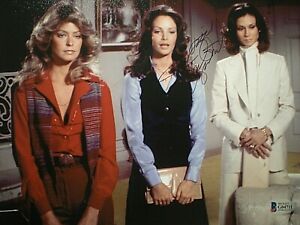
Then there was this sassy hip-hugger look of the seventies when women were beginning to come into their own.
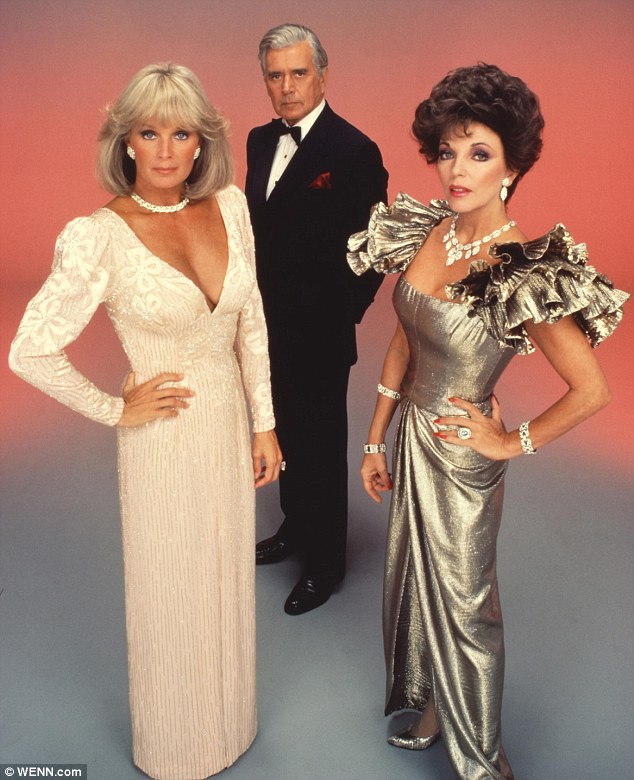
And no one could beat Dynasty for the shoulder pads, but the truth is they were everywhere during the 80s.
You might say the 80s were a combination of shoulder pads and over-opulence. And there’s an important reason to know that. If we know where we came from, we can figure out where we’re going. And the eighties led us into 30 years of one style, so it’s important to know where we came from.
It wasn’t so much that shoulder pads were broad and were predominant it’s that also opulence was so prevalent. Each year brought another more opulent, more beaded, and more elegant look from the designers.
Here are a few examples from my book on the House of Lesage. Maison Lesage was known for its embroidery for decades. Françoise Lesage’s parents took over an embroidery house known for their embroidery for the court of Napoleon, and through the leadership of François, became the embroidery Maison for the couture houses in Paris and all over the world.
NOTE: For the sake of space these photos are smaller. Right-click and select <Open in another Tab> to see a huge size, and catch the detail of each photo. They all contain close-up of the beading, which shows just how intricate and detailed the work on these tops were.
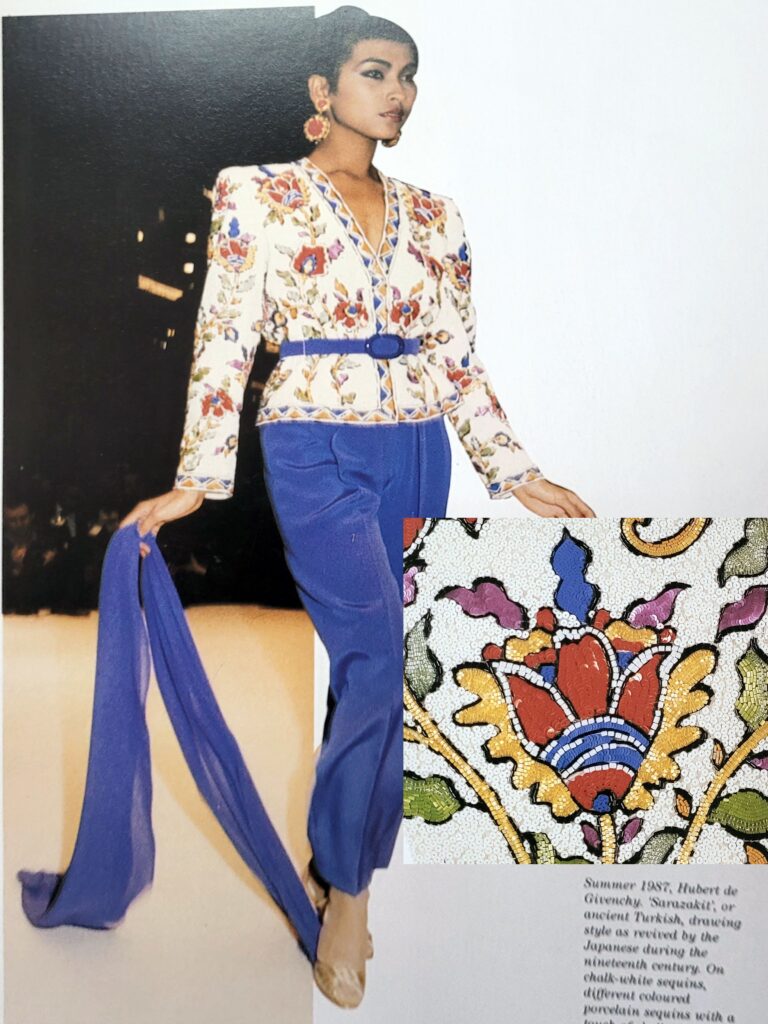
Even for simple daywear, a beaded top was a must. This top was completely covered with beads and probably weighed at least 10 pounds.
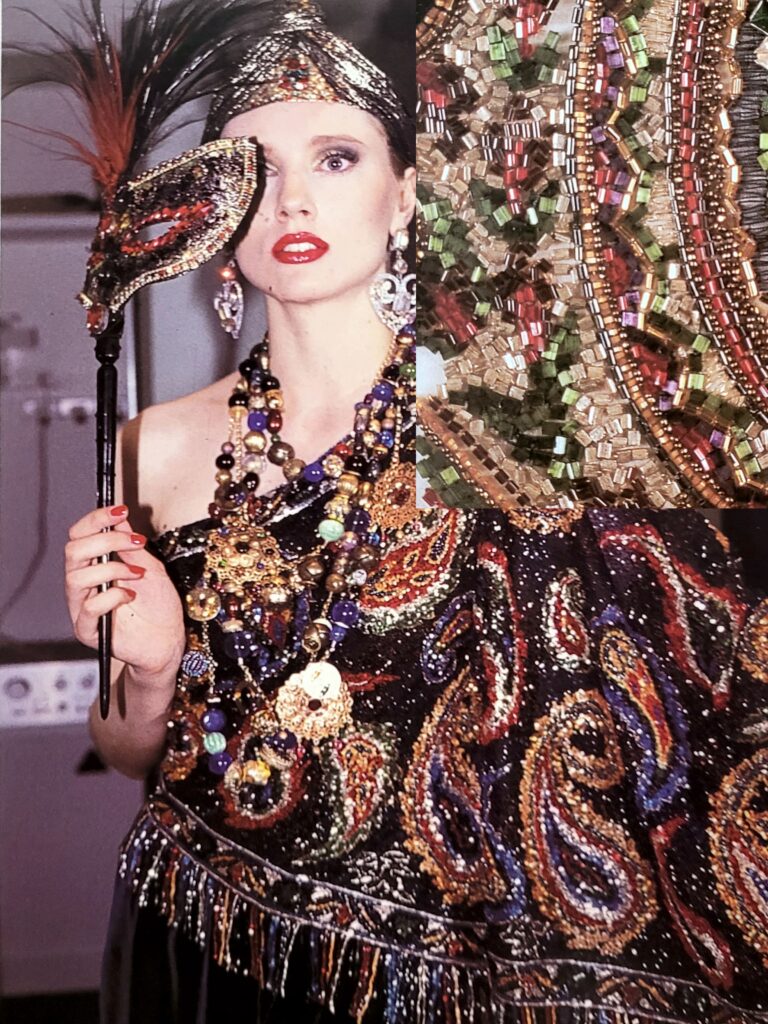
Maison Scherrer was one of the well-known houses in Paris for exquisite and gorgeous designs. This is from the F/W 1984 show, and in the inset, you can see that the whole fabric of the top was covered in beading.
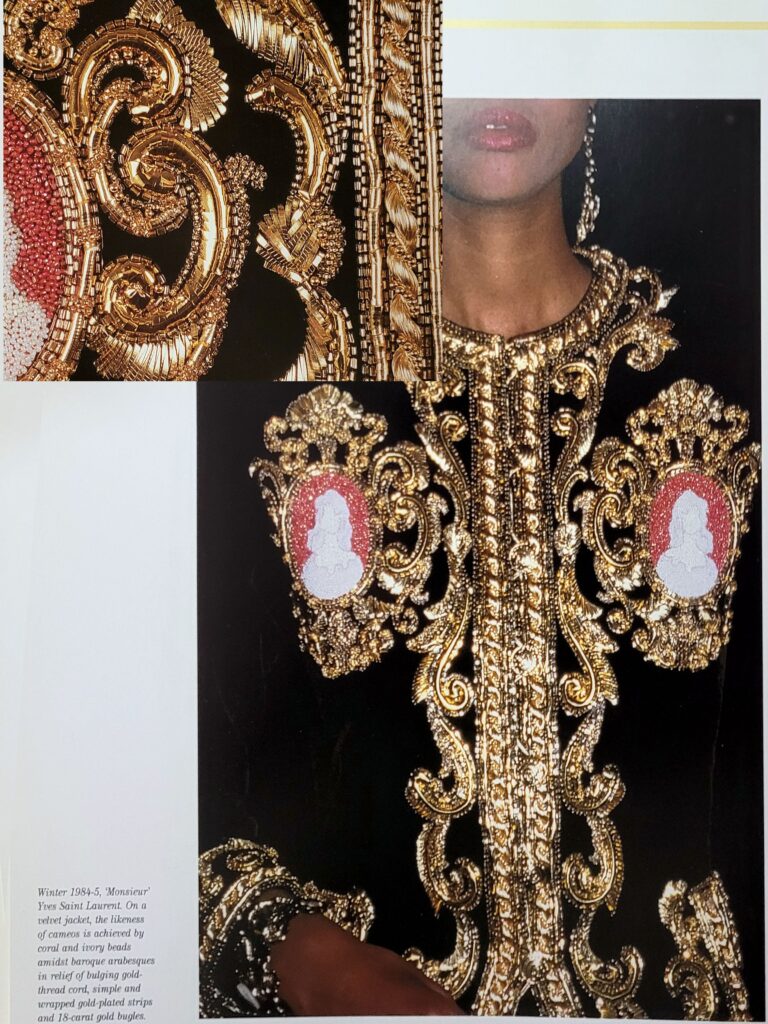
One season led to another season of more beading, more elegant designs to the point that the designs were very Rococo, which was an exceptionally ornamented design period of the Barque era. This is from one of my favorite designers, Yves St. Laurent for his F/W 1984 collection. I can imagine myself seeing this and thinking I could do freehand machine embroidery on a top to copy the feel of the design as I couldn’t afford to do the embroidery. When a client asks me to do embroidery I start at $5,000 and then go up every time they say embroidery after that.
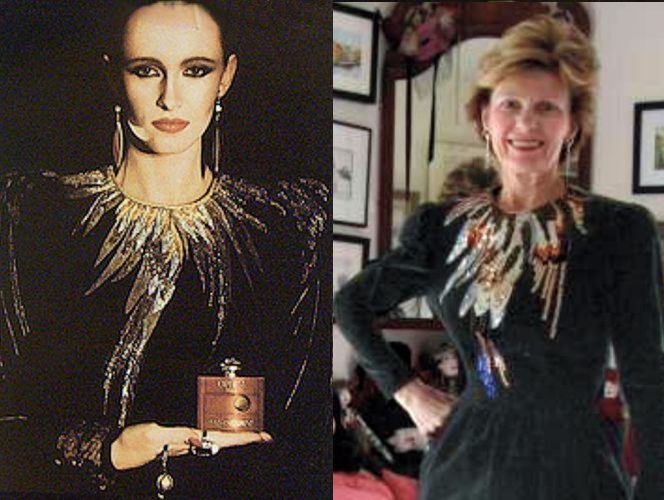
This was my homage to the period, and although YSL’s version was done with semi-precious stones and one only with sequins, I felt mine was just as effective as his, and I made a great show in it. I’ve since taken the shoulder pads out but still have the dress and wear it when needed upon occasion! I won’t ever get rid of it. It took about 36 hours to do this beading!
The same way the opulence and exaggerated ornamentation on clothing led to the French Revolution, is the same way fashion had its own revolution and ushered in the age of Grunge. And it’s been an age since we’ve seen a change in fashion. But we traded one sort of opulence for another. Although we did away with the over-abundance of ornamentation, we traded for the over-abundance of junk clothing!
So back to the blog that started all this, about How Much Clothing Do We Really Need? I see this as a totally positive question, and hopefully, we are returning to not replace one over-abundance with another. This transition should make a more moderate number of pieces in our closet as well as longer-lasting garments. And although I haven’t ever had an over-stuffed closet (but maybe an over-stuffed stash, which I’ve since cleaned out), I have seen the clothe’s closets of friends and clients that are so over-abundant that it would make a 1980s fashionista blush with embarassement.
I’m thrilled to see these gals address this subject and hopefully, it will be reflective of a return to some sort of normalcy in closet capacity and choice. That normalcy is reflected in their questions such as why they sew: for a more personal or individualized wardrobe, for sustainability, which has always been a given with sewing but been lost by all the advocates who write exposé books on the perils and abhorrence of fast/cheap fashion. That’s why I’m so thrilled to see these gals address this up front.
Sewing is probably the number-one way to attain a sustainable wardrobe. There are so many factors that go into the sustainability of a me-made garment.
- Purchasing only the fabric you need for the garment you’re making, instead of purchasing what you might think you can sell, and then trashing what’s left.
- Cutting out what you need leaving far less wasted fabric.
- Using sustainable sewing techniques that last for years and years, instead of using inferior methods that do not hold the pieces togeher.
- Using durable fabrics and notions that last far longer than skimpy yarn fabric that rips and tears too easily.
- Using fabric type, weight and color that will work in your wardrobe and your style instead of having to settle for something that you hope will work, but never does and ends up taking space in your wardrobe and giving you guilt feelings because it reminds you of something you bought that never worked.
- Styling and Fitting the garment just the way you like and just how you want and wearing it over and over and over for years and even decade or more, instead of wearing something a couple of times, washing it and having it fall apart, stretch or shrink and no long is the shape you bought or liked when you bought it.
With all of these going for it, it’s a shame sewing isn’t mentioned in Overdressed, Lessons From Madame Chic (and her famous Chapter 4: Liberate Yourself with the Ten-Item Wardrobe), The End of Fashion, and Fashionopolis, and How Cheap Clothes Ruin Lives – none of these books offer sewing as an alternative. Overdressed, does mention it but it’s so insignificant it might as well not even be in the book. Granted these books are about the system itself, but while condeming the consumer for furthering this awful nightmare, not a one of them even broaches the idea of sewing one’s own clothes – not even learning the process.
At least learning how to sew makes you a much better consumer. This is how and why the manufacturers were able to get away with so much as sewing had been nixed from the curriculum of many schools, high school and above, that no one knew what a good garment looked like, acted like, felt like or even close to a well-made garment. Folks just assumed that there was some group like the FDA that protects food, out there to protect clothing from being made shoddily. Since there wasn’t the market just went nuts, and we end up today with most of the population wearing the Emperor’s New Clothes and not even knowing it!
There is hope with these newer fashion people who are picking up on sewing as an alternative, as much for individualization in fit, comfort and style as much as for sustainability who are liking the process and seeing a lot more to their clothes that something to be worn a couple of times and trashed like a used tissue!
I’m excited about this because with the change in style (long over due – about 20 years overdue), a whole new attitude about designing your own wardrobe to fit your style, shape and size is in the future for more people. And even for thsoe that don’t want to sew all their own clothes, there’s the hope that knowing enough about how a garment is assembled makes for a much better, sharper and more discriminating consumer which makes for….(wait for it)…. a much more sustainable, durable, classic and longer-lasting garment!
Can’t wait!

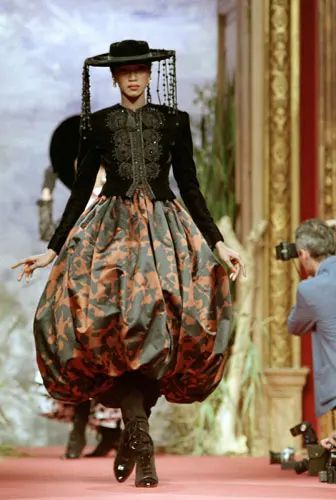
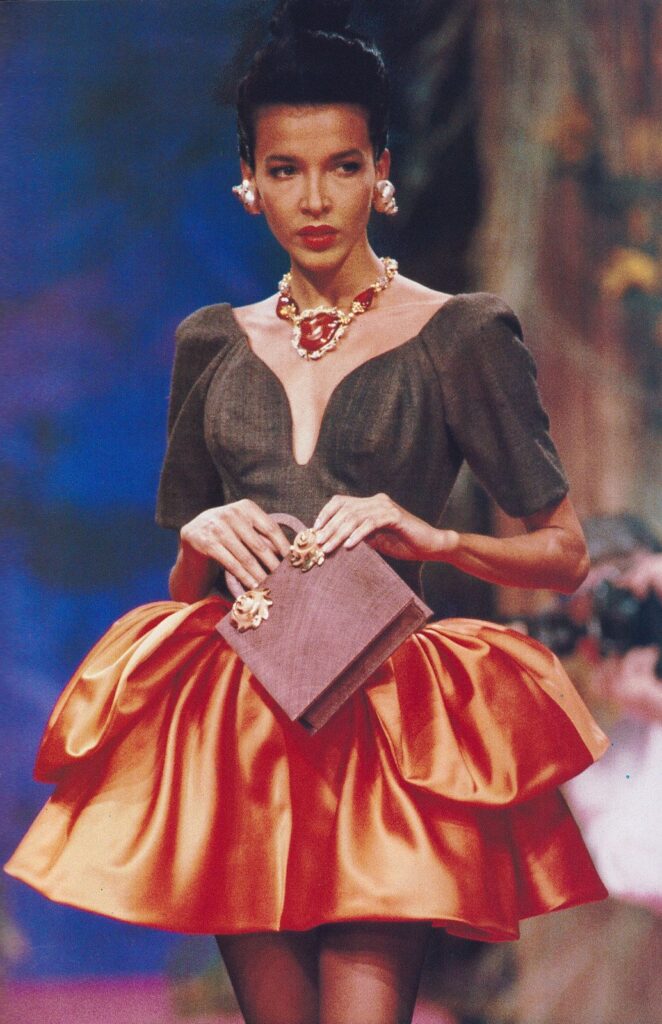
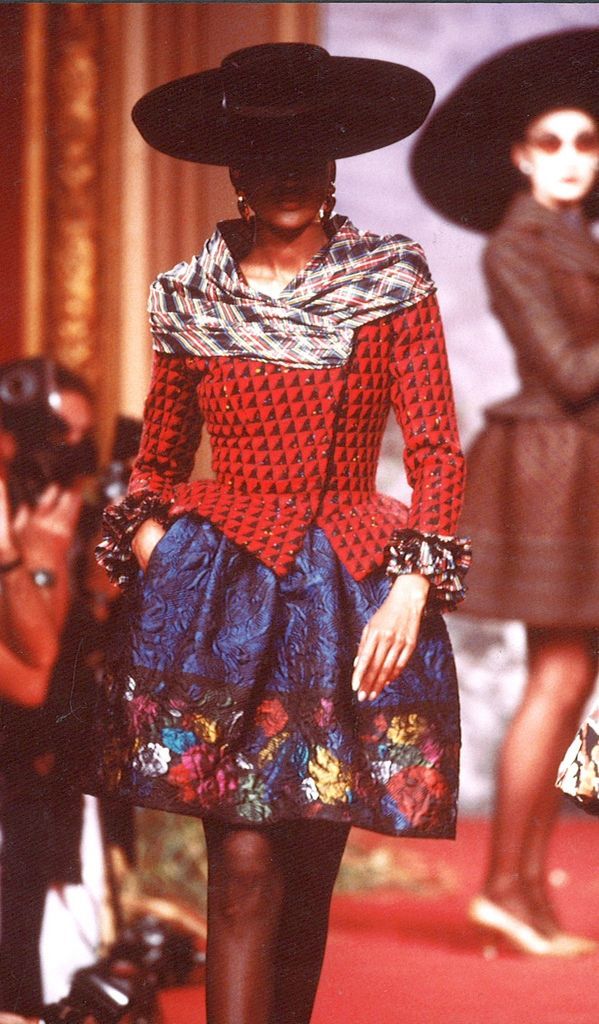
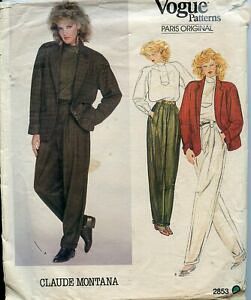
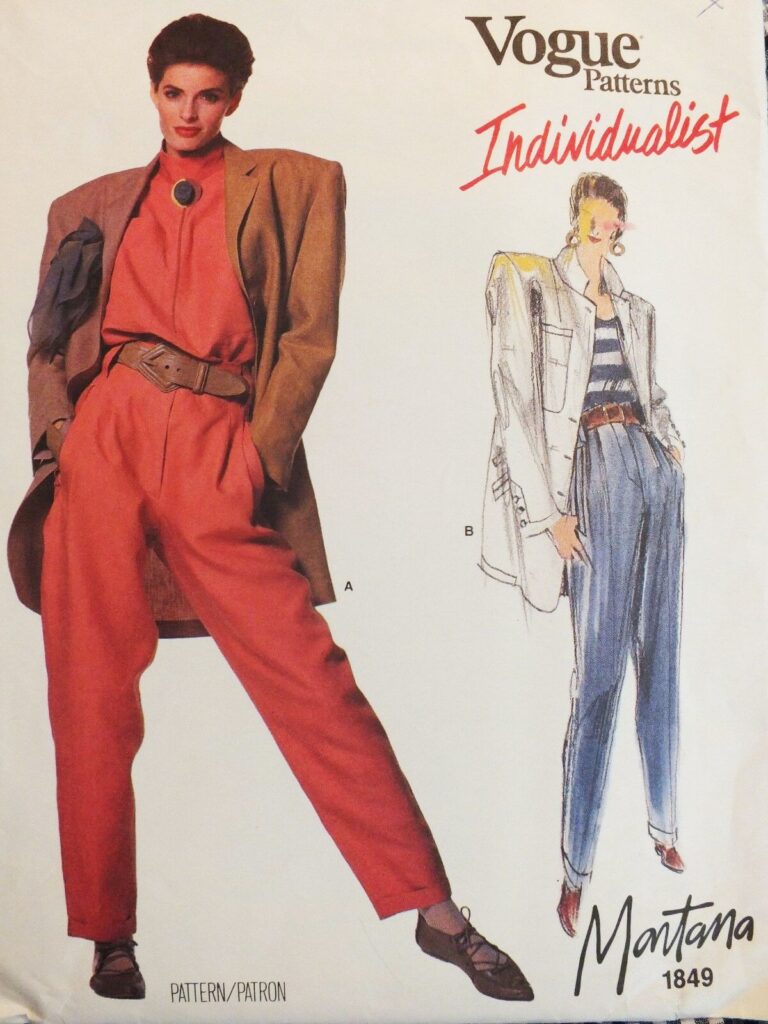
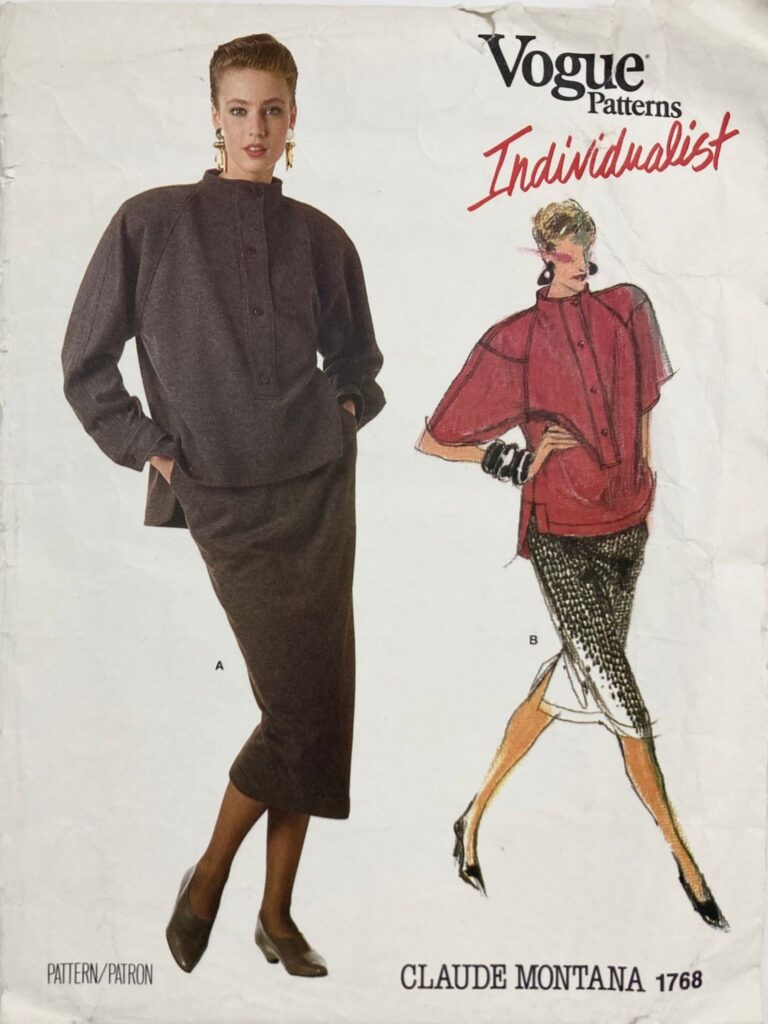
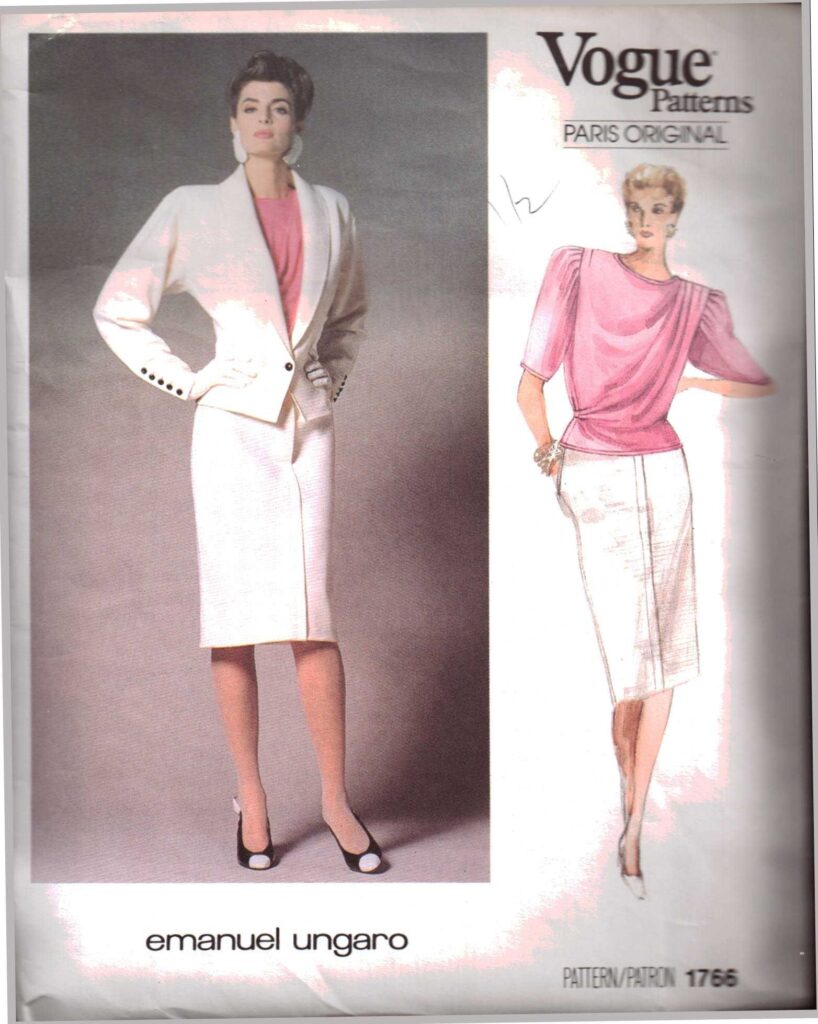
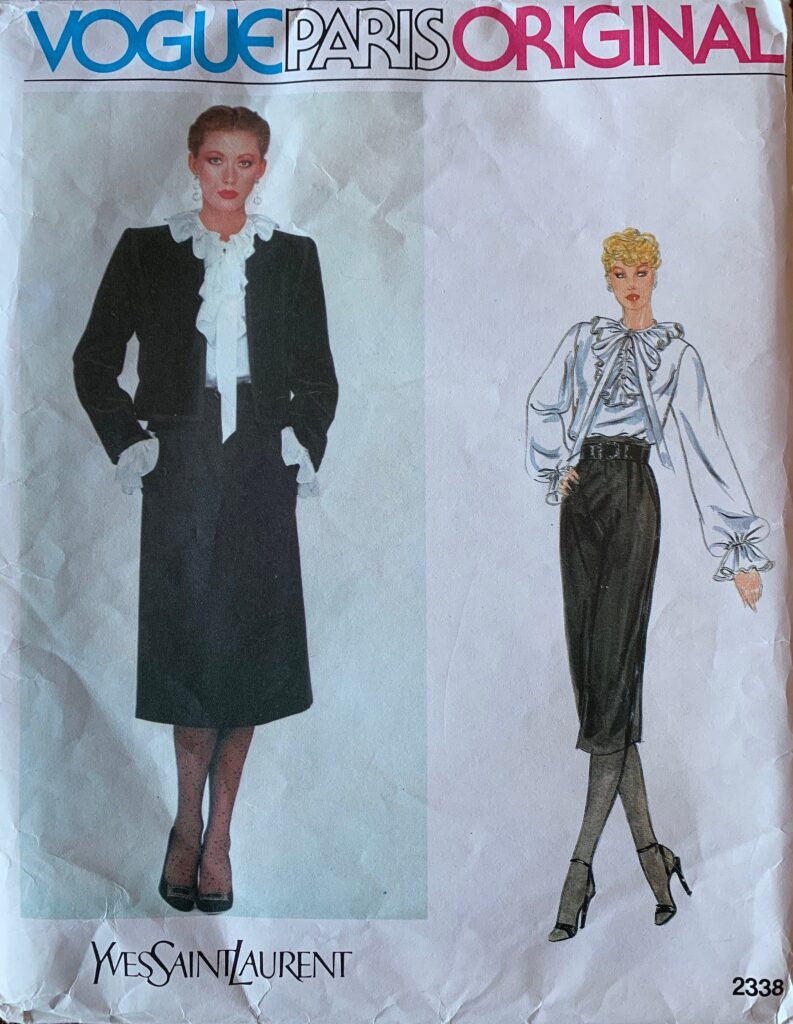
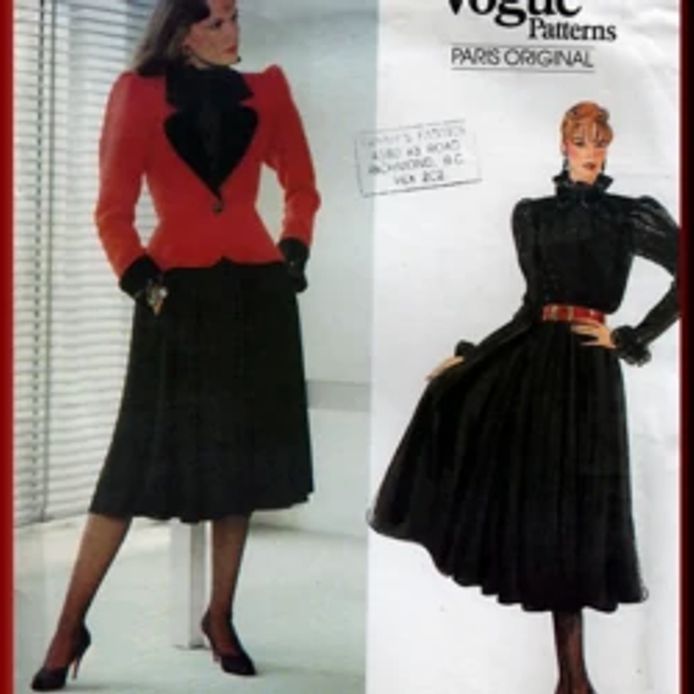
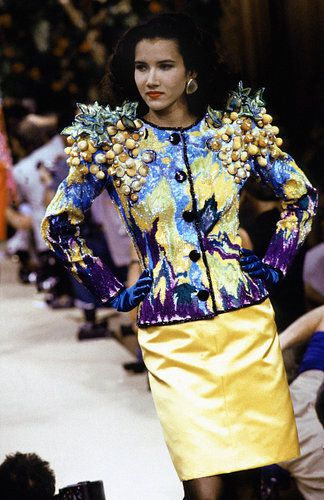
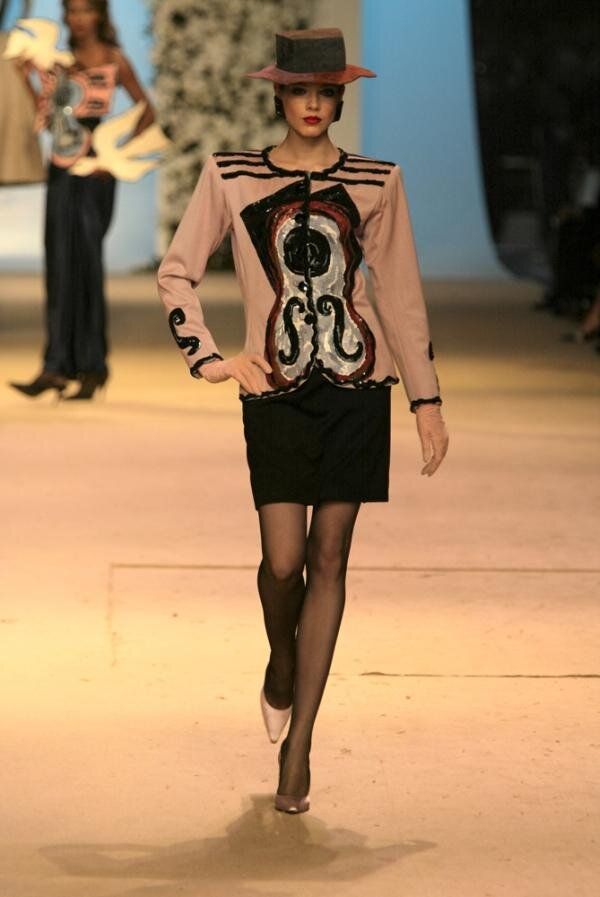
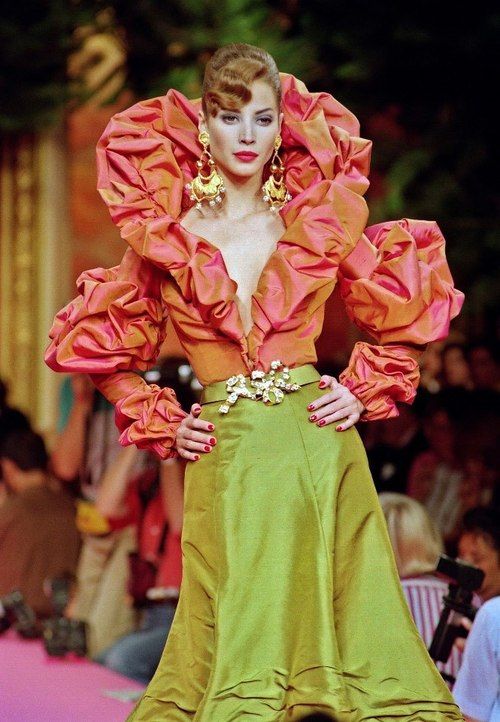
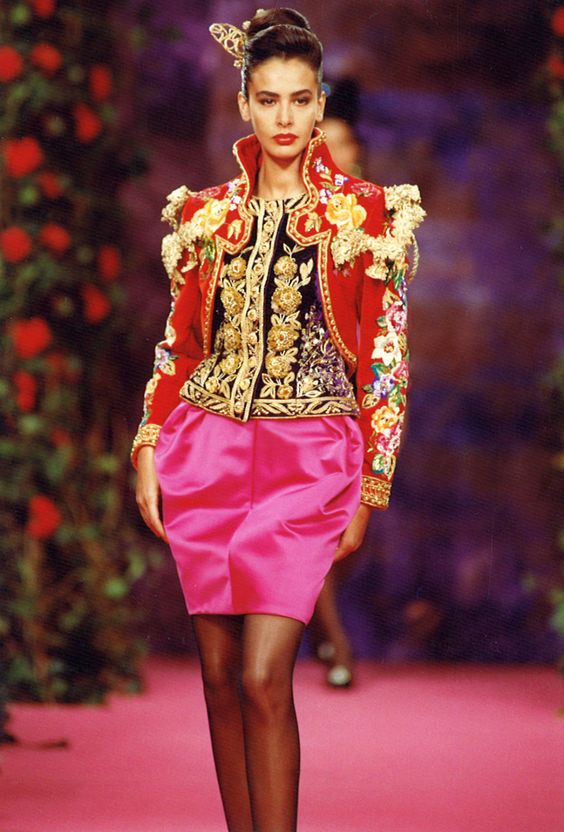
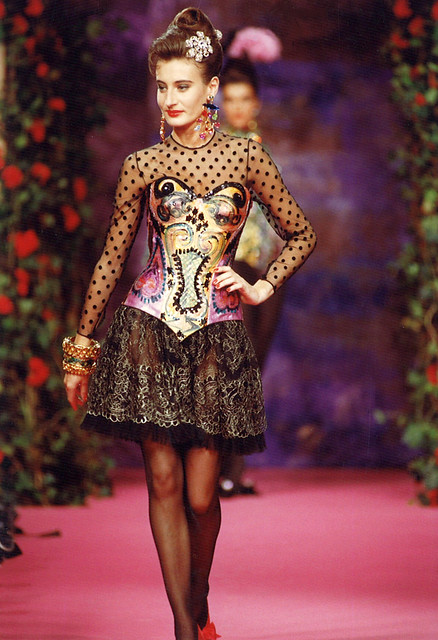
Claire,
So nice to know we both liked the same designers in the past. I actually had the left Ungaro and center Montana patterns !
The beading on your jacket is beautiful. That kind of embellishment was never my style but it looks good on you.
Thanks for such an interesting article.
Believe it or not that Montana 1768 (center right) is a killer pattern. I’ve often thought of making it up before. Although it wasn’t listed as a fabric suggestion on the pattern, I did it in Ultrasuede and it came out so fabulous I was astonished. I was still mentoring at the time, and my teacher and her other students were shocked at how well it came out. Ultrasuede is today, an unsung fabric, and hope it has a comeback cause it’s a very useful fabric for a lot of clothes. An Ultrasuede jacket, coat, top (like this one) even skirt or dress are great staples to have in a person’s wardrobe. Maybe not all of them but certainly one. An Ultrasuede classic raincoat is a gem of a garment to have. Hmmmm – maybe I need to talk about that more with that Halston series on. He was the one who really used Ultrasuede a lot in his collections.